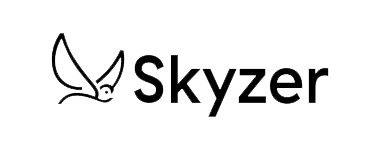When a customer swipes or inserts their Debit card on your EFTPOS terminal, they don’t incur any additional costs from the action, and neither do you. However, when a customer chooses to use a contactless method, someone has to field the fee that banks have implemented. More often than not, that someone is the merchant running the store—you.
But that doesn’t mean you can say goodbye to contactless; you can choose to turn this merchant’s fee into a surcharge that’s added automatically onto the customer’s total transaction. The question is, what are the benefits (and potential drawbacks) of implementing this practice?
Let’s take a look.
The Benefits of Contactless Payment Surcharges
New Zealand is the leader in the world’s EFTPOS market, with over 75 per cent of Kiwi transactions taking place electronically. Those payments are now starting to shift towards contactless, and that means businesses need to keep on top of the desires of their customers, so they need to go contactless.
For the Merchant: Your Budget Won’t Take the Hit
The most obvious benefit of transferring some of the surcharges to the customer is the protection of your business expenses, because you won’t be taking the financial hit. If you hire an EFTPOS machine or pay any other regular expenses, it can all add up very quickly, so it’s in your best interest to keep any additions off the table.
For the Merchant: Contactless Attracts Business
Even if, as a merchant, you choose to take on the entire cost of providing contactless payments, you will still enjoy an increase in business. According to research conducted by Paymark and the TRA, utilising contactless methods have shown a doubling in sales compared to those who haven’t, as well as double the amount of overall transactions.
For the Customer: Elevates the Experience
In the world of customer service, a smooth experience typically goes hand-in-hand with a fast experience. Contactless payments enable a faster interaction, and the “tap and go” method has improved store experiences all over the country. More and more Kiwis are migrating to the frictionless payment every day because it’s fast, easy and secure. Customers are now able to enjoy a “walletless” existence with apps like ApplePay or WeChat Pay, where convenience is the top priority, and a card isn’t even necessary. Therefore, a small fee for each transaction is, in the mind of the customer, usually worth it.
Furthermore, more and more people are using Scheme debit cards (i.e. VISA Debit, MasterCard Debit etc.) over EFTPOS cards thanks to the former’s features. On top of being able to do everything that an EFTPOS card can, like withdraw cash or pay for purchases electronically, having a Scheme debit card also works as a credit card and lets people pay online or by phone as you would with a Credit Card.
For the Customer: Secure Payments are Worth It
The Drawbacks of Contactless Payment Surcharges
For the Merchant: Fees Can Vary
Depending on the industry your business is in, a business may charge towards the higher end of the merchant fee spectrum. If you choose to surcharge the entire amount to your customers, they could flinch at the amount. If you choose to surcharge only some of the fee, you still have to field an additional cost every time someone makes a contactless transaction.
For the Merchant: Customers Resenting the Surcharge
The possibility exists that customers could notice the surcharge and resent it being added to their transaction. Despite the prevalence of these surcharges, people might become sceptical, so it’s down to you to assess the climate of your industry. Many local businesses find this to be a big hurdle, as their customer base chooses them for the convenience and experience alike. Passing the cost along could bring challenges to that local or boutique image.
For the Merchant: Convenience at a Cost
Despite the ease of transaction that comes with a Contactless payment, the surcharge that many businesses add onto prices to recover costs can put a damper on that convenience. There are rules around surcharging, and the surcharge amount must bear a reasonable relationship to the Merchants cost of accepting the nominated cards for Payment. The merchant cannot discriminate between different cards (i.e. charge for one scheme but not the others) and they should always check and comply with the procedures set out in their Merchant Agreement. The merchant must also display adequate signage of the surcharge amount so that the customer is fully informed prior to proceeding with their transaction.
Present the right image to your customers,and keep your business floating.
If you’re debating your choices, Skyzer can be there for you. New Zealanders are moving towards a fully contactless existence at a rapid rate, and it’s important to keep up with the tide rather than be crushed by the wave. We are one of the leading experts in everything EFTPOS-related. From software compliance to portable EFTPOS machines in New Zealand, our friendly team can keep you informed and ready to go.
Give us a call today to elevate your business!

